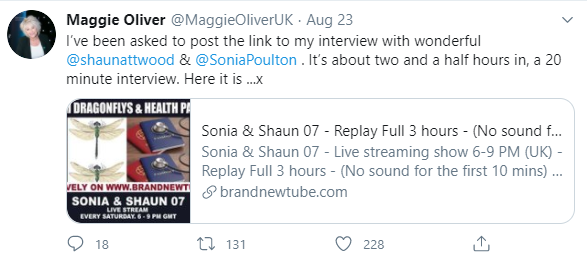From Mail Online:
Twitter has suspended the account of a Chinese virologist who has publicly claimed that COVID-19 was developed in a Wuhan laboratory.
Li-Meng Yan’s account was taken down on Tuesday after she accused China of intentionally manufacturing and releasing COVID-19.
…In an interview with Fox News’ Tucker Carlson on Tuesday night, Yan claimed she was suspended because ‘they don’t want the people to know this truth’.
…After the segment aired, the Fox News show also accused Facebook of censorship after saying they had been blocked from sharing the interview segment on the social media platform.
A video of the interview segment posted on the Tucker Carlson Tonight show’s page now comes with a warning that reads: ‘False Information. This post repeats information about COVID-19 that independent fact-checkers say is false.’
l discussed Yan and her claims yesterday. Currently, Twitter is flooded with expressions of support for the former Hong Kong University research fellow, with many users taking the view that her Twitter suspension (as @LiMengYan119) proves the strength of her case. Some of these users have re-uploaded her media appearances, and there’s even a new account in her name (@li_meng_yan), which is either impersonation or a ban evasion.
It is possible that Yan’s account has been suspended as part of Twitter’s Canute-like efforts against misinformation; however, there may be another reason, such as inauthentic behaviour designed to boost the account’s prominence – given that Yan is under the guidance of Steve Bannon, this is not a far-fetched suggestion.
As regards the Carlson interview, this has been flagged by Facebook rather than blocked – anyone using the platform can view it, but they must click a “See Video” button first. This button sometimes appears over the video and sometimes under it (presumably depending on the platform being used) – in the latter position, it can be cropped off screenshots to give a false impression of censorship. Facebook users are also invited to click on a “See Why” button to find our why the interview has been flagged – this brings up links to Factcheck.org and USA Today debunking claims that the coronavirus was bioengineered. This is less than ideal, though: Yan claims to have new information, and so a flag based on older sources gives an impression that the warning serves to re-enforce a consensus rather than address misinformation.
Carlson, as one would expect, claims that this is censorship at the behest of the Chinese government. This is unlikely – there is plenty of material on Twitter and Facebook that the Chinese Communist Party must find objectionable, and Yan’s purported “evidence” has been dismissed by scientists (1). The one thing that really has been artificially engineered is Yan’s sudden media prominence, and social media owners are pushing back against this kind of manipulation as the US election draws close.
Footnote
1. Yesterday, I noted a Twitter thread by Kristian G. Andersen of the Department of Immunology and Microbiology at Scripps Research, as well critical accounts of Yan’s claims published in the Daily Beast (“Steve Bannon Is Behind Bogus Study That China Created COVID”) and Newsweek (“Fact-check: Does a New Study Give Evidence that the Coronavirus Was Made In a Lab?”). There are also pieces in Forbes (“‘Whistleblower’ Claiming China Created Covid-19 Coronavirus Has Ties To Steve Bannon”) and the New York Times (“Actually, a Chinese Virologist Didn’t Prove That Covid-19 Was Man-Made”), as well as a post by Alex Berezow at the American Council on Science and Health (“COVID: No, Coronavirus Wasn’t Created In A Laboratory. Genetics Shows Why”). Among conservatives, Jim Geraghty at the National Review advises “skepticism”, but adds the banal point that her lack of evidence doesn’t prove the virus might not be manipulated in some way.
Also of interest is this Twitter thread by Alina Chan, who advocates for scenario in which a natural coronavirus escaped by accident. Chan takes Yan at face value as a good-faith whistleblower, and bending over backwards to think the best of her, she suggests that whistleblowers are “not going to be in the clearest state of mind after abuse”, and that they ” cannot pick their savior”. However, “claiming SARS2 was derived from the Zhoushan viruses that are >3000 mutations different — this has destroyed the report’s credibility, and, more importantly, diverted attention away from RaTG13, miners, and the missing WIV virus database (the 2nd Zenodo article)”
Filed under: Uncategorized | 5 Comments »




